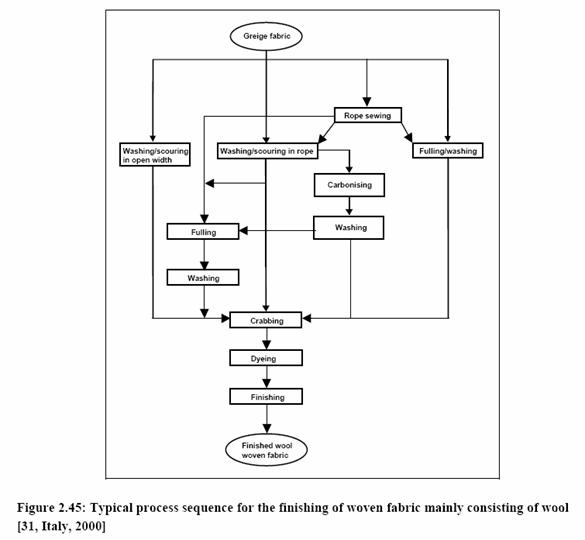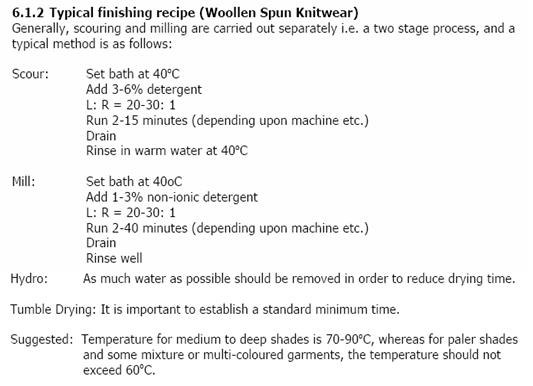Finishing of wool
From Efficiency Finder
⧼monobook-jumptonavigation⧽⧼monobook-jumptosearch⧽
Back to EFFICIENCY FINDER FOR TEXTILE INDUSTRY
- Wool finishing Flowsheet
source: BAT 2003
- Typical parameters of the process
| Techniques | Temperature [°C] | Pressure (bar) | Heat transfer medium | Residence Time | pH | Additional information | Literature |
| Fabric setting | Very hot, near boiling point; afterwards shock cooling with cold water | water | to relax and stabilize latenst strains | 2005 Australian Wool Innovation Pty Ltd: Finishing of woven wool (pdf) | |||
| Scouring: rope processing | 40 | water with dergent (synthetic, non-ionic, anionic | 8-8,5 | for open width processing | 2005 Australian Wool Innovation Pty Ltd: Finishing of woven wool (pdf) | ||
| Drying | 120-140 | hot air | on stenter | 2005 Australian Wool Innovation Pty Ltd: Finishing of woven wool (pdf) | |||
| Steaming | 120 | 1 | temperatures vary with quality | 2005 Australian Wool Innovation Pty Ltd: Finishing of woven wool (pdf) |
source: 2005 Australian Wool Innovation Pty Ltd: Finishing of knitted wool (pdf)
source: 2005 Australian Wool Innovation Pty Ltd: Finishing of knitted wool (pdf)
- Energy consumption
| Fibres/Fabrics etc. | Process/technique | Water consumtion [l/kg] | Thermal energy [MJ/kg] | Electrical Energy [MJ/kg] | Energy consumption | Literature |
| tops/floc, mainly WO | finishing mill | ca. 40 (for more hank:80) | 11-28 (for more hank:26) | ca. 0,8 (for more henk: 1,1) | BAT in textile industry 2003 | |
| knitted fabric, mainly WO | finishing mill | 70-120 | 9,5 | 67 | BAT in textile industry 2003 |


